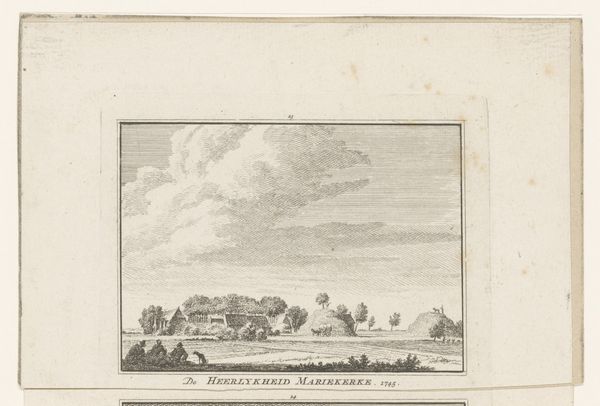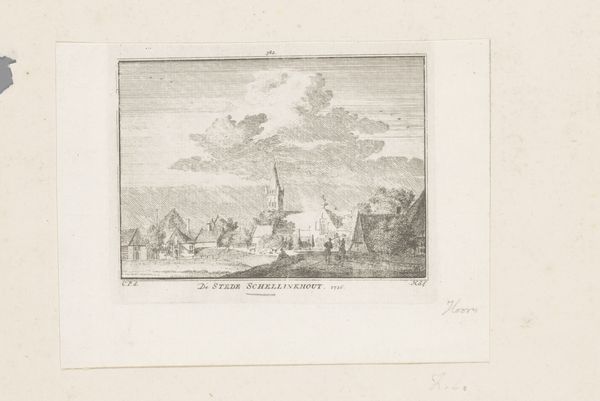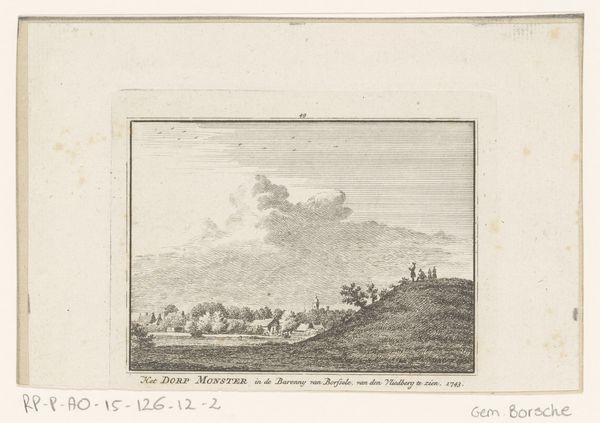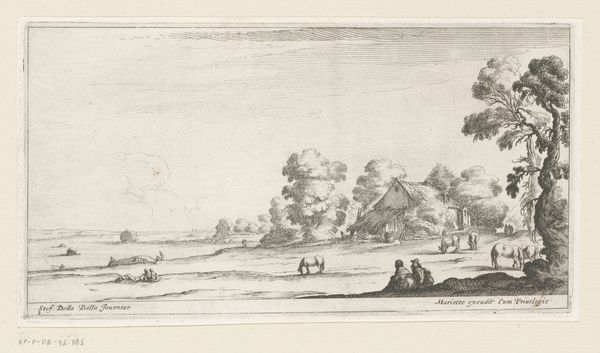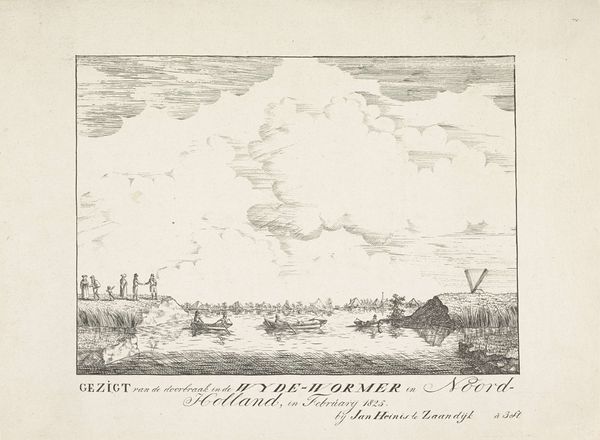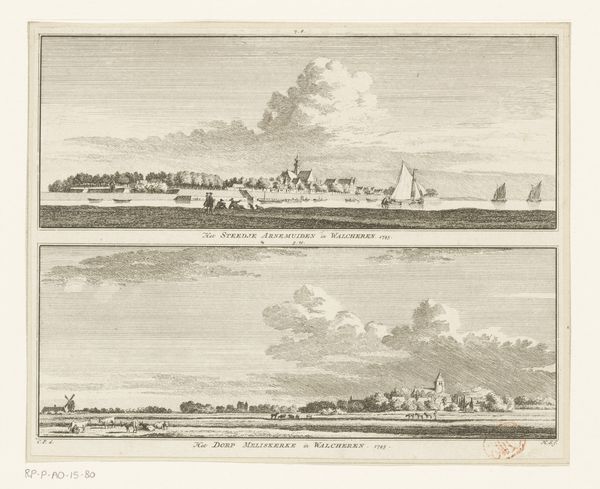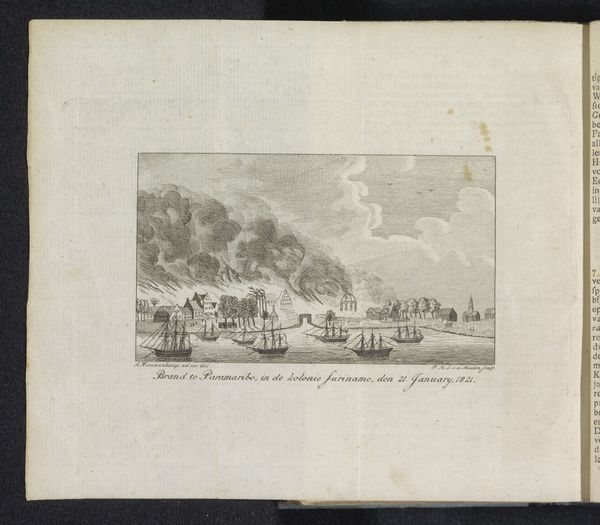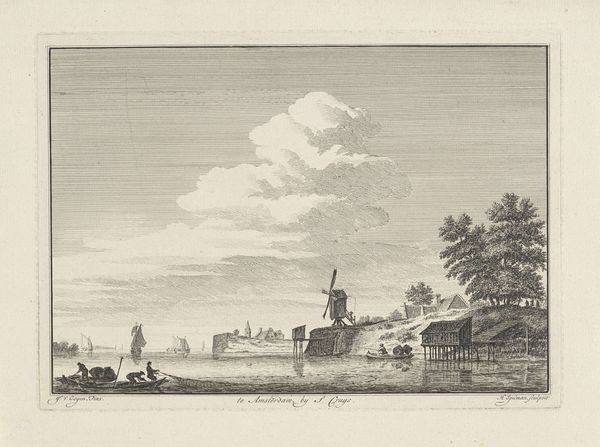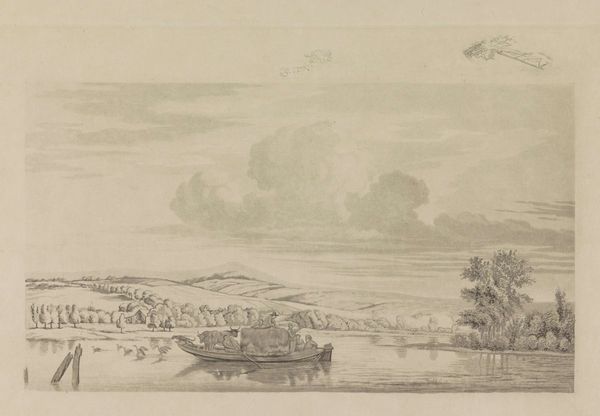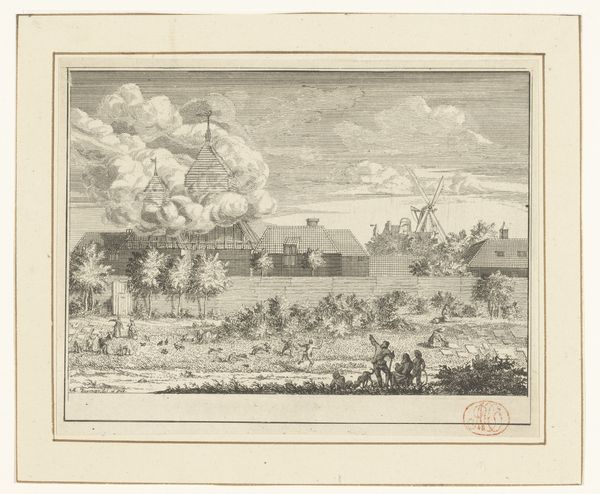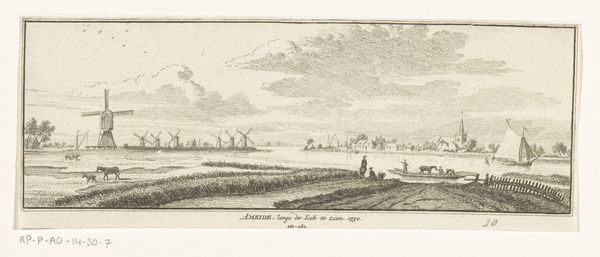
print, etching, engraving
#
dutch-golden-age
# print
#
etching
#
landscape
#
line
#
cityscape
#
engraving
Dimensions: height 82 mm, width 105 mm
Copyright: Rijks Museum: Open Domain
Curator: This delicate etching presents a view of Serooskerke, dating roughly from 1754 to 1792 and crafted by Hendrik Spilman. Editor: There’s a striking stillness to it, a quiet observation. The lines are so clean and precise. What catches my eye most are those heavy clouds dominating the sky, almost mirroring the detail in the landscape below. Curator: Indeed. Spilman, working within the traditions of Dutch Golden Age landscape art, was documenting the Dutch countryside and its towns, not only through art but, I imagine, offering visual records for social and economic purposes, perhaps commissioned to highlight local trades. Editor: Considering that perspective, it is very interesting to think about this intricate technique; all those carefully placed lines meant to capture the nuances of light and form within this ordered space, using simple line, a medium with intrinsic qualities like rhythm and tonal variation. How fascinating. Curator: Right. The materiality itself contributes. Consider the consumption of prints in this era; etchings allowed for reproduction, democratizing art. People who perhaps could not afford to commission paintings could own an image of their town or another one close to them, and the labor that goes into each engraving or etching. Editor: You make me think, how would this simple cityscape look if it didn't have a towering sky, full of expression, yet contained in very rigid geometrical and structured composition, and the artist makes them balance out. I'm compelled to think this affects how the viewer feels. Curator: Undoubtedly. By observing details like the small figures on the field going to the town, it becomes more of a witness to a time and place, emphasizing labor, or portraying certain societal events. It’s more than aesthetic; it’s a window into the economy of visual representation. Editor: Ultimately, these subtle interplay of form, material, and meaning encourages us to investigate what landscapes meant at the time. Curator: Yes, allowing us to rethink this artwork considering how it was perceived and how its production intersected with labor, politics, and Dutch culture.
Comments
No comments
Be the first to comment and join the conversation on the ultimate creative platform.
